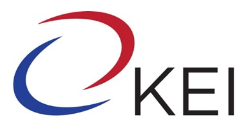1985 Posts located
Asia
1985 Posts located
For Southeast Asia, the COVID-19 pandemic was not only a public health crisis. It also provided an occasion for China to deepen its engagement in the region by dint of…
July 30, 2021
COVID-19 has not gone away, and observers are now discussing possible long-term effects of the pandemic, including on geopolitics. A report by the European Parliament discussed five COVID-generated factors that…
July 30, 2021
The coronavirus pandemic that struck in late 2019 has affected the world profoundly, and Japan is no exception. But the direct impact on Japan has been relatively small considering the…
July 30, 2021
The national identity gap between China and the United States has become increasingly apparent. Under Xi Jinping, China has sought to reclaim its historical greatness and proclaimed itself to be…
July 30, 2021
This week, we delve into how Japan views the security threat from China, and how these perceptions shape Japanese policy. For this, we turn to security expert Dr. Narushige Michishita.…
May 20, 2016
Last week, North Korea launched its Seventh Worker's Party Congress, a major meeting of regime leaders that has not been convened in 36 years. Although analysts had high expectations for…
May 10, 2016
In this episode, we take a step back from the Korean Peninsula and take a look at Northeast Asia from the perspective of one of its neighbors – Russia. In…
May 9, 2016
On May 1, South Korean President Park Geun-hye will travel to Tehran, Iran for a summit meeting with her counterpart, President Hassan Rouhani. This visit will be the first time a…
April 29, 2016
Last Thursday, Korean chipmaker SK Hynix made history by developing a 10-nanometer (nm) transistor process for 16 GB Double Data Rate 5 (DDR5), the latest iteration of dynamic random-access memory (DRAM) chips. By allowing for greater memory capacity and processing speeds for the corresponding central processing units (CPUs) that are used for cloud computation, this…
September 5, 2024
“You can either buy clothes or buy pictures.” (Gertrude Stein) The air will be filled with a different kind of buzz in Seoul this week as it hosts the third annual international art fair, Frieze Seoul. Over 110 leading art galleries worldwide will assemble for four days at the COEX Convention and Exhibition Center in…
September 5, 2024
The public sector financed 76 percent of healthcare in OECD countries in 2021 using compulsory health insurance and government programs (Figure 1, Panel A). Korea is an outlier in this regard, as only 62.3 percent of its health expenditures were covered through mandatory financing schemes. The low share of mandatory financing in Korea was offset…
September 4, 2024
The overwhelming majority of refugees who flee North Korea are generally those who live in border areas adjacent to China and do not have prominent government or economic positions. Few are from Pyongyang because it is very difficult for citizens to travel within the country unless police and internal security officials approve the travel. Meanwhile,…
